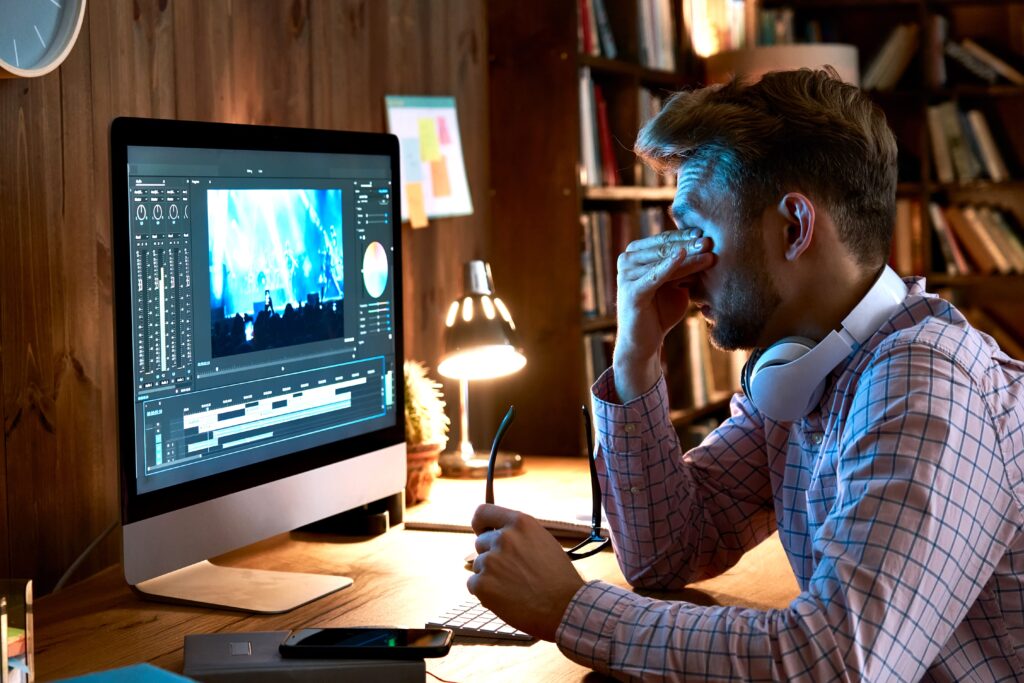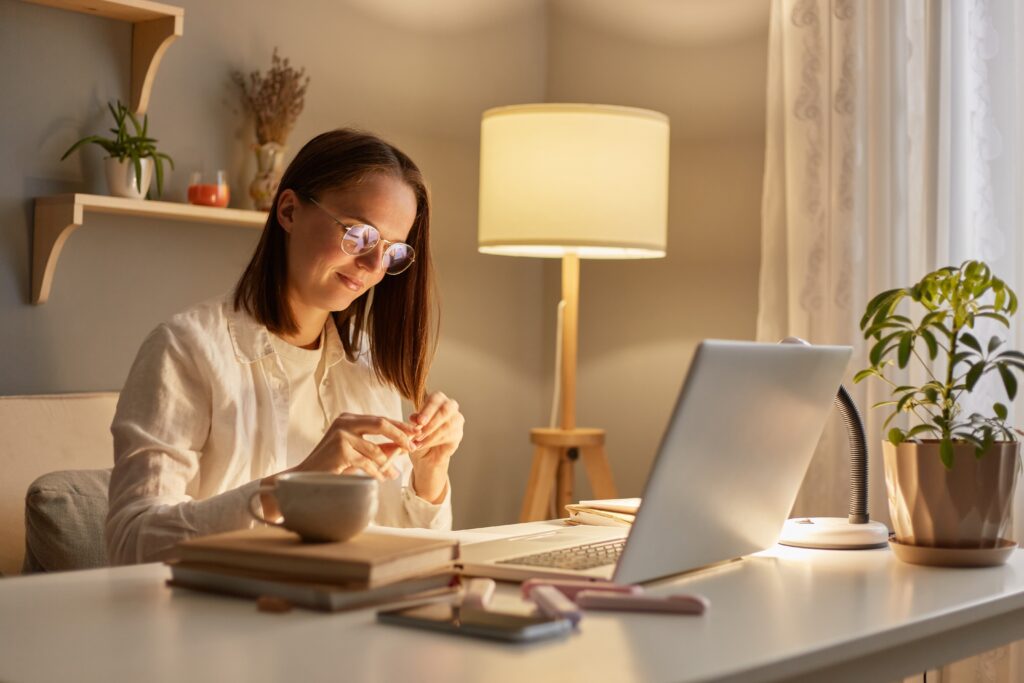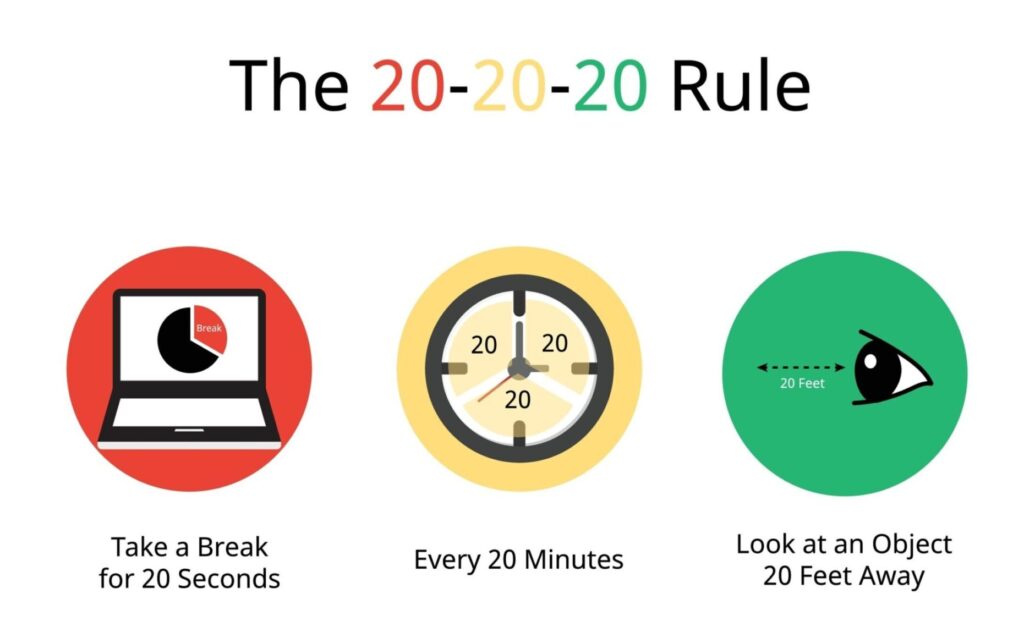Do you know the 20-20-20 rule?
How much time do you spend in front of a screen each day?
Do you sometimes find yourself with tired, dry eyes?
If these questions intrigue you, please read on.
We’re talking about eye strain. It's common. In fact, dry eye is the most common reason people see an optometrist.
Our eyes get tired from intense use, such as while driving long distances or staring at a computer screen and/or other digital devices.
When we have eye strain we may experience:
- Watery eyes or dry eyes
- Sore, itchy, burning, tired eyes
- Headaches and neck pain can also be associated with eye strain
The good news is that most eye strain rarely causes any serious or long-term consequences. Most eye strain goes away in a few days once you rest your eyes or take steps to reduce the discomfort. Sometimes, the symptoms can indicate an underlying eye condition that needs treatment so it’s important not to ignore it. See a medical professional if the self-care steps don’t relieve the eye strain.
Identify the Cause(s) of Your Eye Strain
Do you focus for long periods of time? Do you drive long distances? Do you spend a lot of time in front of a screen? ......Or more than one of these?
All these activities can cause strain on your eyes.
Reduce the strain:
Once you’ve considered from where your strain comes, the next step is to consider what you can do to reduce the strain.
Perhaps you need to modify some habits/environmental factors. It could be simple changes like wearing sunglasses while driving, or making sure there is adequate light when reading or performing close-up work.
Lighting:
"Good" lighting means providing enough illumination so that you can see your reading material/documents clearly but are not impacted by high light levels that cause glare.
One tip is to position the light source behind you when reading printed material to avoid having the light glaring directly into your eyes. You also want to make sure the lighting doesn’t cause shadows that obscure what you are reading.
When lighting is wrong, for instance, there is glare, people tend to lean forward or backward to try to compensate. An awkward body position can lead to eye strain and may also increase the likelihood of back and neck fatigue.
Screens:
Screentime is more of a strain than reading because we tend to blink less often when using a digital device. We also tend to view devices at a less than ideal angle or distance. Our devices may have poor contrast between the text and the background. Further, the screen’s glare or reflection may compound the issue.
Some tips:
- Keep yourself an arm's length from your screen.
- Increase the size of the text on the screen.
- Angle the computer monitor away from lights and windows.
- Adjust the brightness and contrast according to your preference.
- Use a light colour for the background.
- If you wear glasses, ask about lenses that decrease glare or filter blue light emitted from screens.
And blink..seriously, blink, to help combat dry eyes that contribute to the strain. When we are focused, we tend to blink less so we have to make it intentional; blink.
It has to be said...cut back on screen time. Many smart phones include a digital wellbeing feature that tells us how much time was spent on the device each day. It might also offer features like “bedtime mode” where blue light is reduced at the times you specify, such as at bedtime. Check out what features your device offers that will help reduce screen time or at least reduce the glare.
Make It Intentional
You've got this!
Tips for Drivers:
- Remind yourself to blink often to lubricate your eyes.
- To combat dryness, make sure the heating/cooling vents are not blowing directly into your eyes.
- Wear polarized sunglasses to reduce glare and prevent eye strain that can come with excessive sunlight.
For more information read the article at this link:
Conclusion:
Take a minute to assess your environment and consider what you can do to reduce the potential for eye strain.
The small things make a big impact.
Give the 20-20-20 rule a try and remember to blink more often when in front of a screen.
Check out these links for more information.







